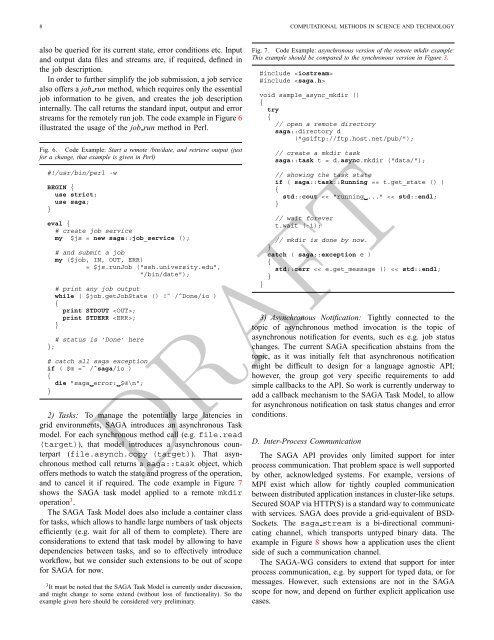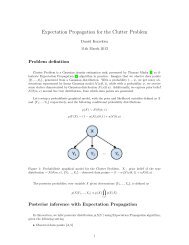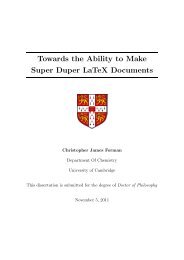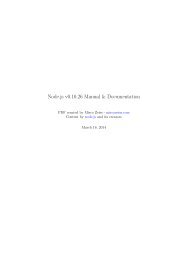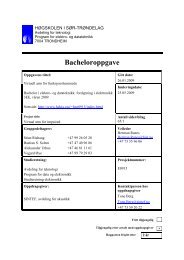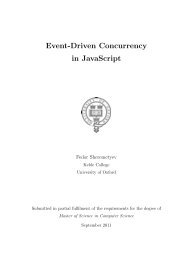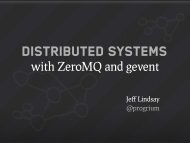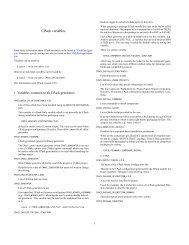SAGA: A Simple API for Grid Applications High-Level Application ...
SAGA: A Simple API for Grid Applications High-Level Application ...
SAGA: A Simple API for Grid Applications High-Level Application ...
Create successful ePaper yourself
Turn your PDF publications into a flip-book with our unique Google optimized e-Paper software.
8 COMPUTATIONAL METHODS IN SCIENCE AND TECHNOLOGYalso be queried <strong>for</strong> its current state, error conditions etc. Inputand output data files and streams are, if required, defined inthe job description.In order to further simplify the job submission, a job servicealso offers a job run method, which requires only the essentialjob in<strong>for</strong>mation to be given, and creates the job descriptioninternally. The call returns the standard input, output and errorstreams <strong>for</strong> the remotely run job. The code example in Figure 6illustrated the usage of the job run method in Perl.Fig. 6. Code Example: Start a remote /bin/date, and retrieve output (just<strong>for</strong> a change, that example is given in Perl)#!/usr/bin/perl -wBEGIN {use strict;use saga;}eval {# create job servicemy $js = new saga::job_service ();# and submit a jobmy ($job, IN, OUT, ERR)= $js.runJob ("ssh.university.edu","/bin/date");# print any job outputwhile ( $job.getJobState () !˜ /ˆDone/io ){print STDOUT ;print STDERR ;}# status is ’Done’ here};# catch all saga exceptionif ( $@ =˜ /ˆsaga/io ){die "saga error: $@\n";}2) Tasks: To manage the potentially large latencies ingrid environments, <strong>SAGA</strong> introduces an asynchronous Taskmodel. For each synchronous method call (e.g. file.read(target)), that model introduces a asynchronous counterpart(file.asynch.copy (target)). That asynchronousmethod call returns a saga::task object, whichoffers methods to watch the state and progress of the operation,and to cancel it if required. The code example in Figure 7shows the <strong>SAGA</strong> task model applied to a remote mkdiroperation 3 .The <strong>SAGA</strong> Task Model does also include a container class<strong>for</strong> tasks, which allows to handle large numbers of task objectsefficiently (e.g. wait <strong>for</strong> all of them to complete). There areconsiderations to extend that task model by allowing to havedependencies between tasks, and so to effectively introduceworkflow, but we consider such extensions to be out of scope<strong>for</strong> <strong>SAGA</strong> <strong>for</strong> now.3 It must be noted that the <strong>SAGA</strong> Task Model is currently under discussion,and might change to some extend (without loss of functionality). So theexample given here should be considered very preliminary.Fig. 7. Code Example: asynchronous version of the remote mkdir example:This example should be compared to the synchronous version in Figure 3.#include #include void sample_async_mkdir (){try{// open a remote directorysaga::directory d("gsiftp://ftp.host.net/pub/");// create a mkdir tasksaga::task t = d.async.mkdir ("data/");// showing the task stateif ( saga::task::Running == t.get_state () ){std::cout


